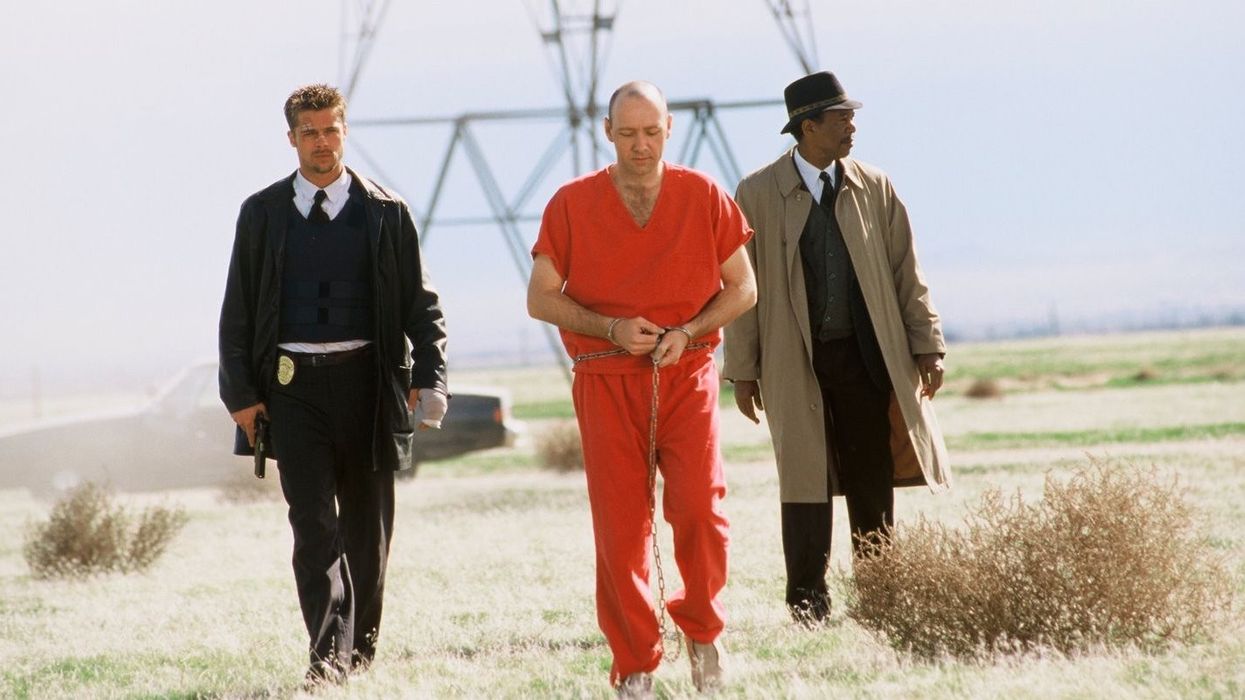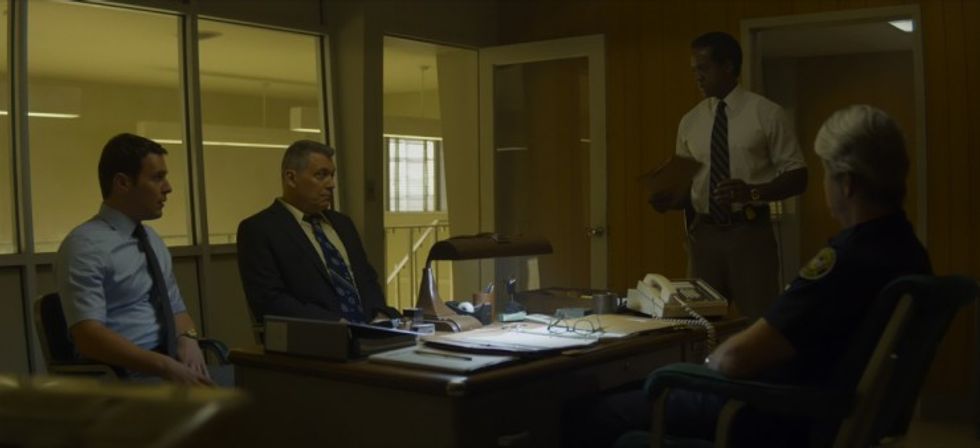What are David Fincher's Favorite Colors?
The visual storytelling of David Fincher is linked to the color theory in works done by the artist Hercules Segers. See how they use color in a similar fashion.

When David Fincher makes a movie or a TV show, you can bet a ton of thought and planning goes into every frame. He's a deliberate creator, someone who finds intention in every choice, from acting to cinematography.
That's why when Fincher chooses a color, it matters so much.
Today, I wanted to take a quick look at Fincher's color theory and see how it reflects one of the most mysterious painters of all time.
What are David Fincher's Favorite Colors?
If you've watched enough Fincher, then you know color affects all his choices. From the pop of the pink soap in Fight Club to the greens that cover space in Alien 3, color matters. Especially monochromatic color. Fincher likes to set a dominant color in his projects and then use that not only in the camera but also in costuming, set decoration, and even filters.
Blues
One of the most popular colors Fincher uses is blue. In the opening scene of Gone Girl, the blue is cold, allowing us to see life in what we think will soon be a dead body. If you look at the blue that's reflected in the character's eyes, on her cheeks, and in her night down, it's the dominant color of the scene. Every color that also exists in this palette is there to support the blue.

When you get to a show like Mindhunter, you start to notice how that blue takes shape in other ways. Here, the background and bars are blue, the light in the window is blue, the shirt on Ed Kemper is blue, and Holden is in a blue suit. These colors link our characters together. They separate them from the outside world...which is made up of Fincher's other favorite color, yellow.
Yellows
Here's another frame from Mindhunter. You can see Holden still in his blue shirt, linking him back to the serial killer and the world he wants to explore. But outside of the blue prison is a yellow world. This is a police station where the light is yellow, and so is Tench's shirt. So is the phone on the cop's desk and even the police patch facing us.
This juxtaposition of Fincher's favorite colors subtly proves who is outsider and who is not. And he doesn't just do this in Mindhunter. He also does it in Zodiac.

Here we have another dual portrayal of characters. One who belongs at the San Francisco Chronicle, and one who is a cartoonist desperate to fit in. So desperate, that his shirt has yellow stripes, an almost camouflage for his place in this world. It seems as if Fincher sees the entire world in yellows and blues.
Turns out, he's not the only visual artist that feels this way. Check out the video from RijksTube and let's talk after the jump!
Is Fincher's color preference influenced by anything or anyone else?
I don't know Fincher personally and neither does the person who made the video we saw earlier. Well, I assume they don't. So It's hard to say definitively that Fincher is a fan of the artist we'll discuss below. Still, there is a remarkable link between Hercules Seger and David Fincher.
Who was Hercules Segers?
According to the Rijksmuseum in Amsterdam, Segers was, "One of the most mysterious and experimental artists of the Golden Age. His strange and wonderful mountain landscapes and endless vistas bear witness to an unbounded imagination. Segers was a truly pioneering etcher, developing wholly individual, arcane techniques for his colorful etchings. Poets and artists down through the ages have been inspired and fascinated by his poetic and melancholic paintings and prints. Rembrandt owned no fewer than eight of his paintings."
So yeah, he' a big deal.
But what makes him like Fincher? Hercules Segers was a master of the monochrome as well. And even better? He made all these images up.
Segers did not live near the mountains and there is no record of his travel, so he was creating these monochromatic images not from memory, but from imagination. The same way a director imagines the world she's creating.
Segers was loved by fellow artists for these bold monochromatic techniques. Even Rembrandt loved him and collected his paintings. Even emulating them in some of his own works.
The point is, these artists used visual artists to set a mood and provoke a feeling. Whether these are moving images or still lives. All artists are looking to provide a private world for an audience member to react to and experience themselves. The palettes they use should help reflect that.
What are some of your favorite director color palettes? Let us know in the comments.
What's next? Learn color theory!
How can you make your film color palette part of the storytelling process? Film color palettes might be one of the most underutilized parts of your filmmaking process. It can be the difference between immersing your audience in a world or boring them to tears.
Keep reading to become a better filmmaker!
















